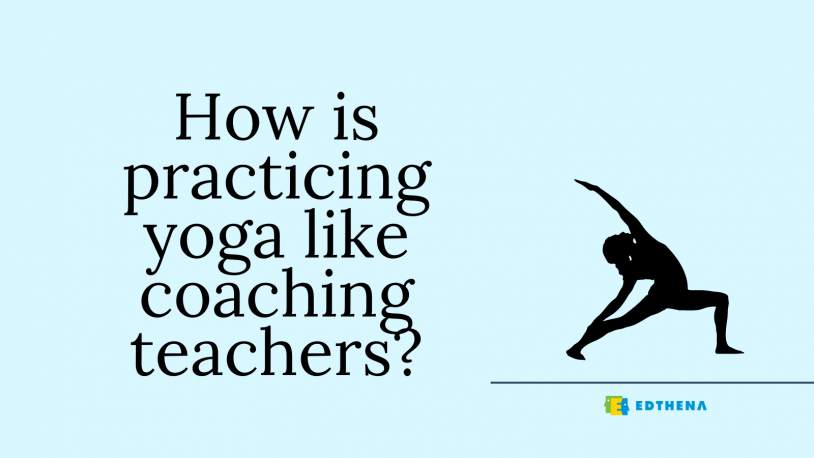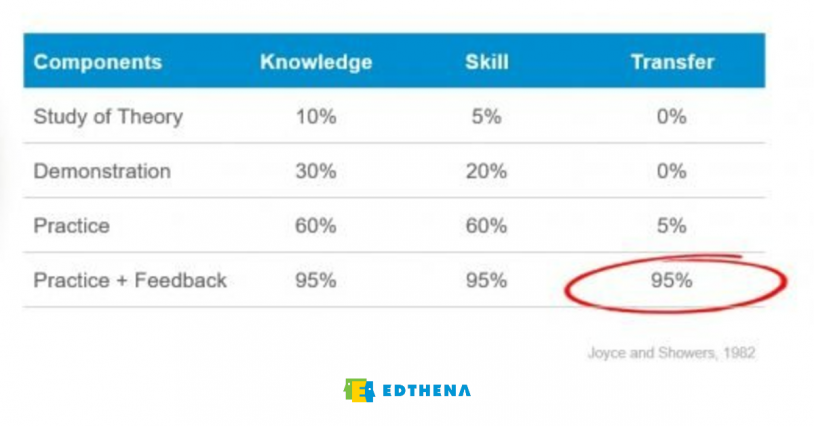What Does Coaching Teachers Have to Do with Yoga? Hint: It’s All About Feedback!
Who among us hasn’t experienced, or at least heard of, the advantages of yoga? In addition to the mental and physical health benefits, it also gives us a framework to understand why feedback-driven coaching for teachers leads to the greatest growth.
What does coaching teachers have to do with getting better at yoga?
Feedback is a crucial yet underutilized component of professional development for teachers. To understand the importance of feedback to educators, think of the difference between your yoga poses (or any sports move!) when done at home on your own versus when practiced in a studio with an instructor.

Have you ever received feedback on how to tweak your pose or improve your form? More often than not, you’ll achieve deeper stretches, better balance, and more refined movements when you have a yogi’s guidance than from watching a Youtube video alone.
Similarly, teachers can sit in workshops to learn pedagogical skills or see modeled demonstrations, and even practice themselves. However, without direct feedback from an instructional coach, they’ll never make sustained improvements for their classrooms.
Just as people improve their yoga positions and athleticism with a coach, so do educators.
The only thing that is proven to be effective for successfully transferring a skill into ongoing practice is coaching teachers by giving ongoing feedback on the implementation of a particular strategy. More feedback really does work, for both those crane positions and classroom techniques.
The research-informed benefits of feedback are significant
The idea of impactful feedback and sustained change is seen not just in everyday examples; it has been backed up in research.

Bruce Joyce and Beverly Showers are the authors of Power in Staff Development through Research on Training. Their research revealed that there is a significant increase in implementing changes and skill transfer when feedback is added to a teacher’s training.
In summary, study of theory, seeing a demonstration of a skill, or practice of a skill alone are nowhere near as effective as a teacher practicing and receiving feedback on the teaching skill.
Joyce and Showers confirmed that the key to making and sustaining a change within their classroom teaching is for the educator to receive ongoing coaching and feedback around that skill.
The research validates what many educators already know: feedback during teaching is valuable to invest in.
Designing coaching and feedback cycles is easy in Edthena
In a world with unlimited coaches who have unlimited time, having coaches visit every teacher’s classroom might be considered ideal by many.
The reality is that having instructional coaches go from classroom to classroom is time-consuming and practically a part-time job managing the logistics: visit a classroom, model a particular reading strategy, then visit again to see the teacher put the strategy to work, and find time to provide feedback.
Now multiply that by 20 teachers!
Fortunately, Edthena has an easier way to give feedback asynchronously by building a skill-building sequence in video format.
In a skill-building sequence, teachers watch and analyze an example video that models a specific skill. After learning from the demonstration in the video, the teacher enacts the skill and shares their own recorded footage with their instructional coach.
Instead of having to set up a time to go to the teacher’s classroom, the coach can view the video and give feedback asynchronously at the time best for them. With the coach’s feedback, the teacher is better equipped to hone the skill and add to their practice more effectively and sustainably.
Creating skill-building sequences can be accomplished in Edthena using a toolset called Explorations. Here’s how the process would look inside Edthena:
- The instructional coach creates a skill-building sequence, including an exemplar video with a modeled skill for the teacher to watch and a request for a new video from the teacher that shows their implementation of the skill within their teaching.
- The teacher watches the example video to develop a concrete vision of what their own instruction will look like. Then they plan and record a lesson where they implement the skill.
- The teacher reflects on their implementation, leaving comments on their own video to compare their practice to the model. Then, they can share the video with the instructional coach.
- The instructional coach views the teacher’s video and has an easy way to provide feedback in the form of questions, suggestions, strengths, and notes.
Skill-building sequences are but one form of a coaching cycle in which coaches can provide direct feedback via Edthena. By providing actionable next steps for teachers’ instruction and skill implementation, coaches and educators can generate sustainable changes and growth.
Perfect your teaching skills just like you perfect those downward dogs! Interested in learning more about how Edthena can help you with coaching teachers and skill-building sequences? See a video of it in action here.
